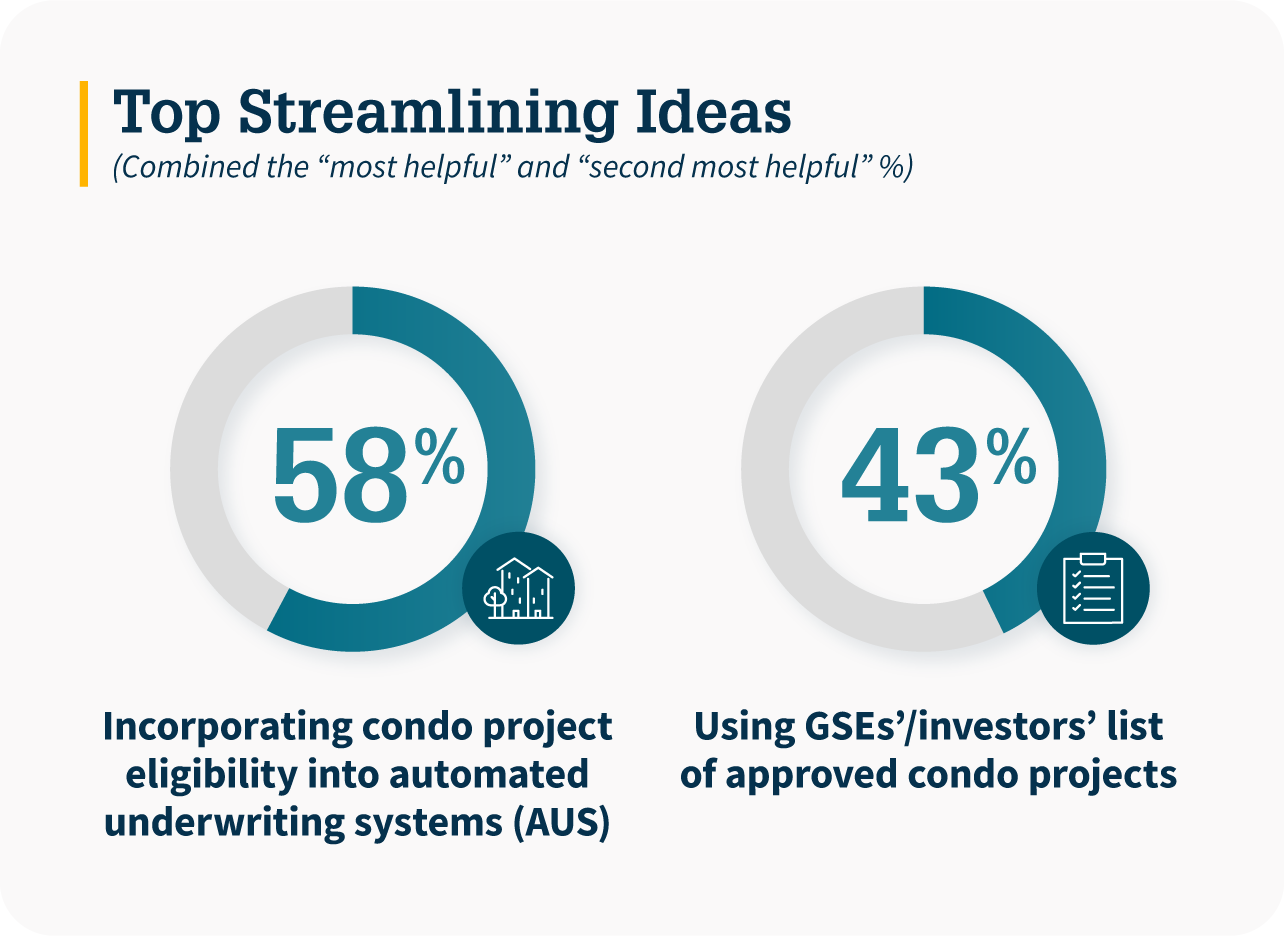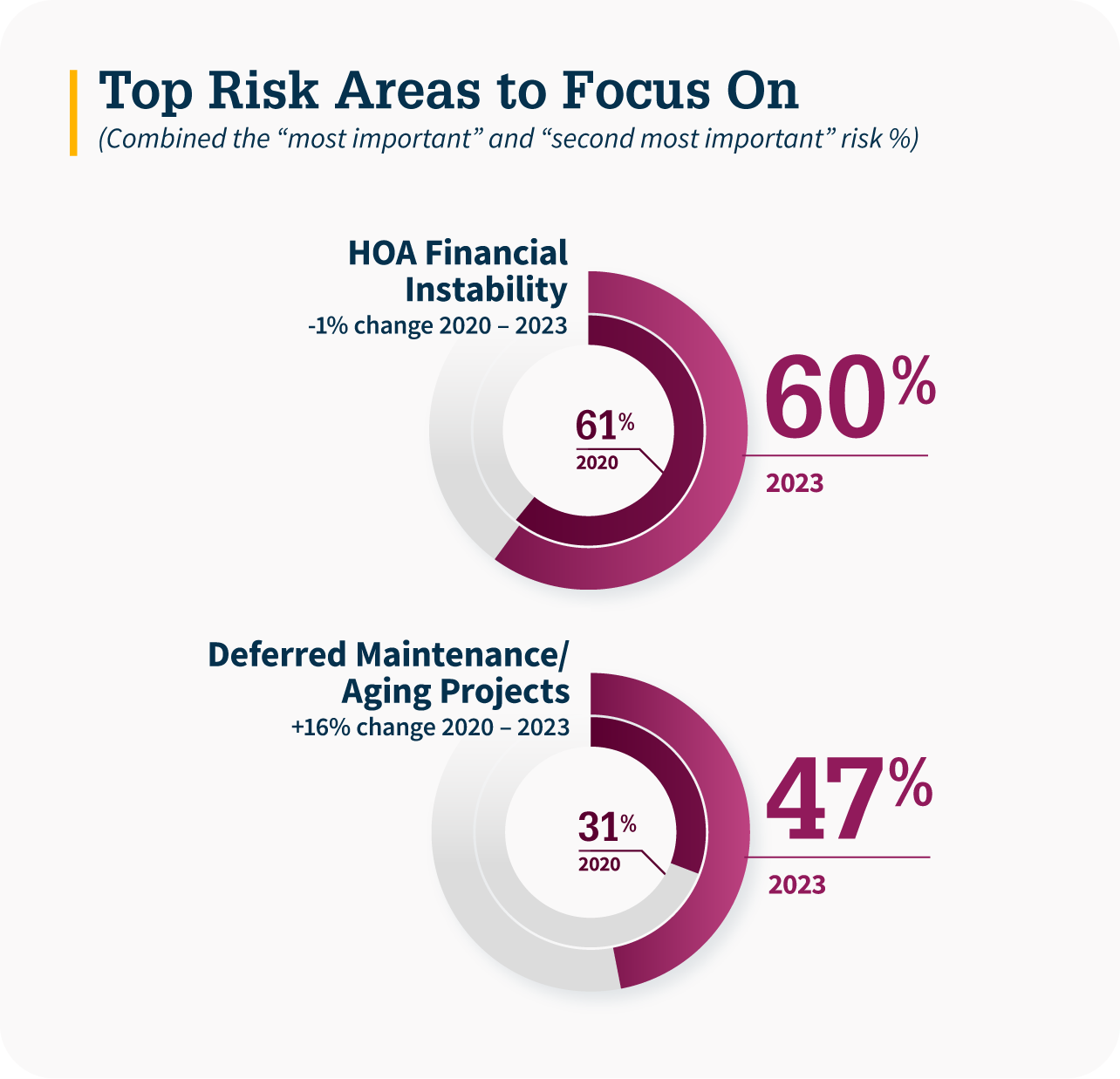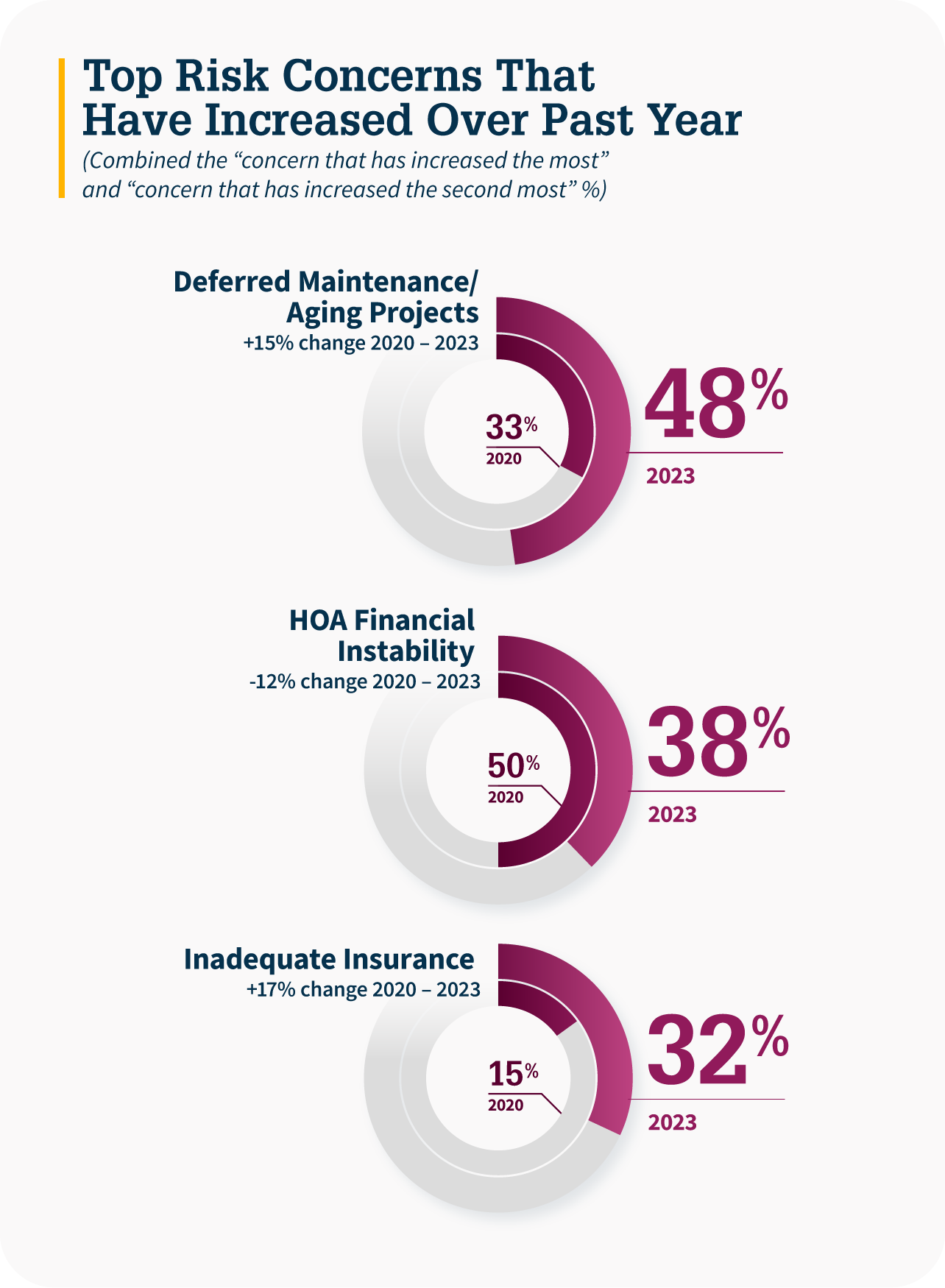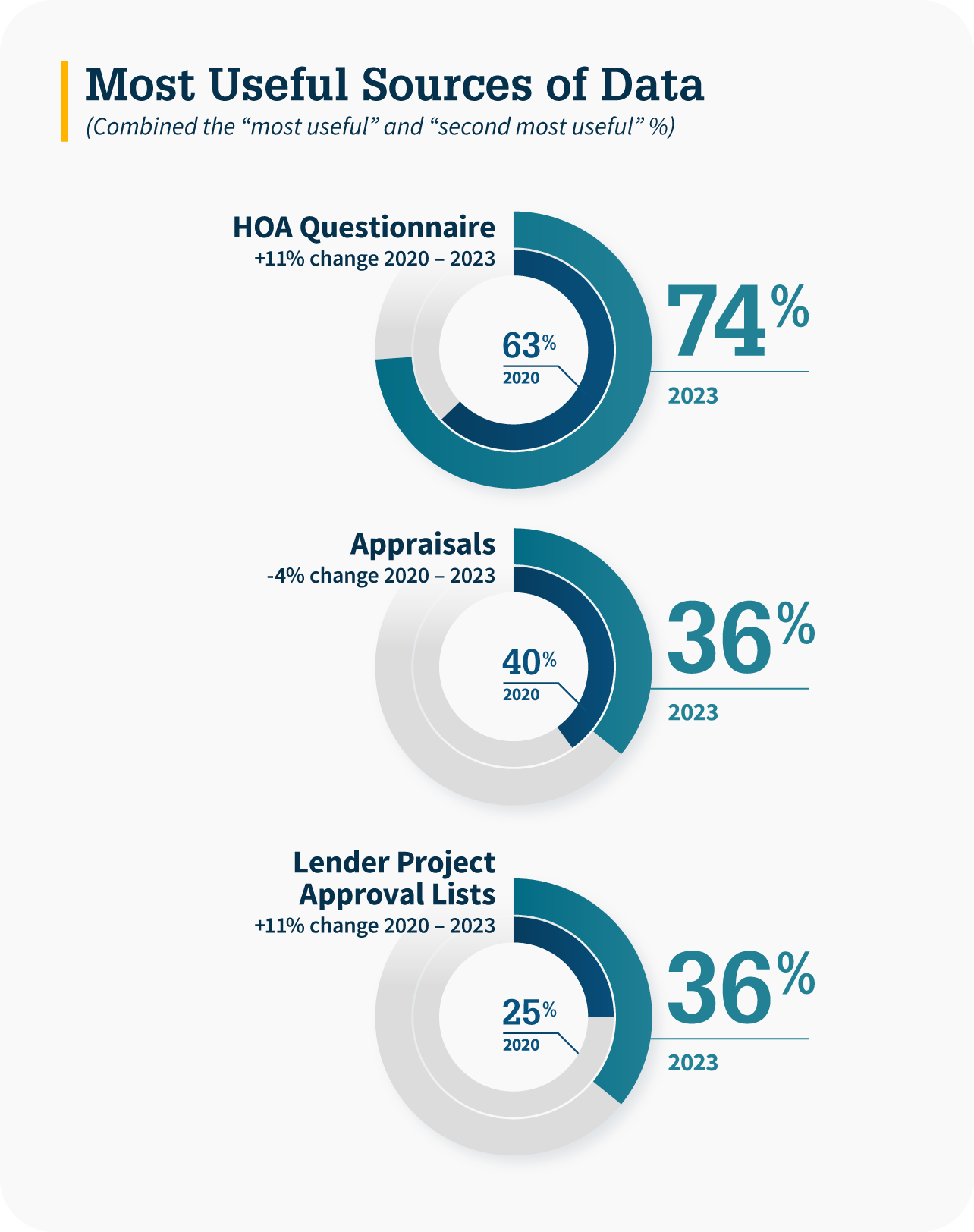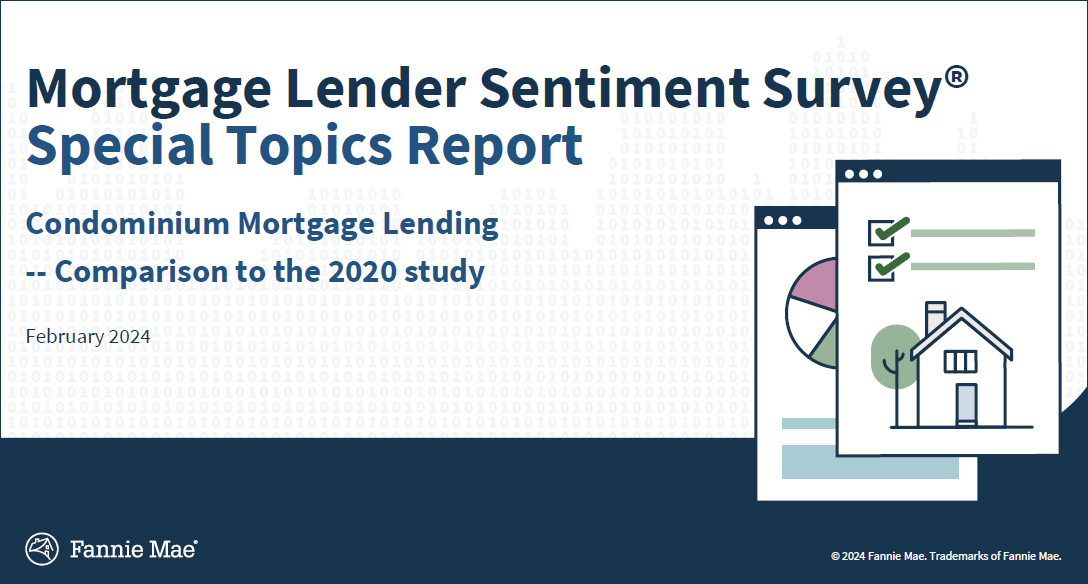Lenders Identify Risks and Opportunities for Condo Lending
With the U.S. housing market continuing to confront the significant supply shortage of homes for sale, condos may play an important role in narrowing the supply gap of affordable housing options1. While condos represent nearly 10 percent of the mortgage market, they often play a larger role in many metropolitan areas2. Condos also present unique risks, as condo owners share financial responsibility for the operation and maintenance of the common areas and shared amenities. The complexities of underwriting condo project eligibility may also increase the costs and timelines for some lenders to approve and close these mortgages.
Last November, Fannie Mae's Economic & Strategic Research Group (ESR) surveyed senior mortgage executives via its Mortgage Lender Sentiment Survey® to gather input on existing condo project review requirements, and to help identify opportunities to streamline processes to better manage condo project risks. The ESR Group had previously surveyed lenders on the topic in August 2020. Comparing the results between the two time periods allows us to better understand how lenders' views and experiences may have changed over time.
Among our key findings:
- Lenders cited incorporating condo project eligibility into automated underwriting systems (AUS) as the most helpful idea in streamlining the condo underwriting process, followed by using GSEs' or investors' approval decision or list of approved condo projects3.
- Compared to the 2020 survey results, homeowners' associations' (HOA) questionnaires4 and lender project approval lists were cited much more frequently by lenders as the most useful data sources for condo underwriting.
- Regarding top risk areas, lenders identified HOA financial instability and deferred maintenance as posing the highest risk – same as in August 2020. Inadequate insurance was the risk that increased the most over the past year.
Overall, the survey results indicated that lenders were more active in condo lending in 2023 than 2020, with 95 percent saying that they originated single-family condo mortgages over the previous 12 months, up from 86 percent in 2020. Moreover, in 2023, lenders were more optimistic about their firm's place in the marketplace, with 29 percent expecting their share of condo loans – as a percentage of total loan volume – to grow significantly, up from 20 percent in 2020. In 2023, lenders were also more likely (54%) than in 2020 (45%) to say they were currently lending in newly constructed condo projects.
To streamline the condo underwriting process, lenders once again cited incorporating condo project eligibility into automated underwriting systems (AUS) as the most helpful idea, followed by using the GSEs' or investors’ list of approved condo projects.
On the top risk areas to the condo mortgage market, lenders ranked HOA financial instability (60%) and deferred maintenance (47%) as posing the greatest risk. In particular, lenders’ concern for deferred maintenance grew significantly from 2020 (31%) to 2023 (47%).
We also asked lenders to identify the risk areas for which their concern levels have increased the most over the past year: The three most commonly cited were deferred maintenance (48%), HOA financial instability (38%), and inadequate insurance (32%). Lenders’ concerns with deferred maintenance and inadequate insurance grew the most from 2020 to 2023 (deferred maintenance: 33% in 2020 vs. 48% in 2023; inadequate insurance: 15% in 2020 vs. 32% in 2023).
Of course, condo underwriting involves gathering data from many different sources, and lenders once again cited the HOA questionnaire as the most useful source of data, followed by appraisals and lender project approval lists. The importance of the HOA questionnaire and the lender project approval lists increased significantly since 2020 (HOA questionnaire: 63% in 2020 vs.74% in 2023; lender project approval lists: 25% in 2020 vs. 36% in 2023).
We believe that today's historically unaffordable single-family housing market5 presents a potential growth opportunity for condos, given that they’re often more affordable and can provide greater location flexibility than traditional single-family homes. Consistent with both our 2020 and 2023 surveys, the condo market remains active, and its participants rely on a wide variety of information sources to guide their decision-making. Given increases in current and expected condo loan volume and the increased complexity of condo underwriting, many lenders welcome the opportunity to streamline the process through improved AUS connectivity, as well as using GSE or investor project approval lists. We believe these represent exciting opportunities on which the industry can continue to innovate and grow.
To learn more, read our Fannie Mae Mortgage Lender Sentiment Survey Special Topic Report, "Condo Mortgage Lending Opportunities."
Opinions, analyses, estimates, forecasts and other views reflected in this commentary should not be construed as indicating Fannie Mae's business prospects or expected results, are based on a number of assumptions, and are subject to change without notice. How this information affects Fannie Mae will depend on many factors. Changes in the assumptions or the information underlying these views could produce materially different results.
1 Foundation for Community Association research: https://foundation.caionline.org/publications/factbook/home-price-trends-2022/; Urban Institute research: https://www.urban.org/urban-wire/housing-market-needs-more-condos-why-are-so-few-being-built
2 According to the American Housing Survey (AHS), in 2021, there were about 10.36 million condo and co-op units, comprised of 7.3% of the housing stock: https://www.census.gov/programs-surveys/ahs/data/interactive/ahstablecreator.html?s_areas=00000&s_year=2021&s_tablename=TABLE0&s_bygroup1=1&s_bygroup2=1&s_filtergroup1=1&s_filtergroup2=1.
Among them, approximately 8.76 million units were owner- or renter-occupied, accounting for 6.8 percent of all occupied housing units, https://www.census.gov/programs-surveys/ahs/data/interactive/ahstablecreator.html?s_areas=00000&s_year=2021&s_tablename=TABLE1&s_bygroup1=3&s_bygroup2=2&s_filtergroup1=1&s_filtergroup2=1.
Based on internal analysis, condos and co-ops are mostly located in large metropolitan areas, such as New York City, Los Angeles, and Miami.
3 Certain loan aggregators, lenders, and investors provide lists or web-based query tools that enable underwriters and loan officers to quickly determine if a condo project meets their eligibility requirements or is ineligible for their lending program. Secondary market examples include Fannie Mae's Condo Project Manager™ (CPM™) and FHA's online query form.
4 Government-sponsored enterprises (GSEs) have developed standardized Condo Project Questionnaire forms (1076/1077) to help lenders collect data to determine condo project eligibility: https://singlefamily.fanniemae.com/originating-underwriting/condo-co-op-and-pud-eligibility.
5 The National Association of Realtors® housing affordability index has dropped below 100 since June 2023, meaning that a family with a median income has less than the income required to afford a median-priced home. https://www.nar.realtor/blogs/economists-outlook/housing-affordability-continued-to-recover-in-december-2023#:~:text=At%20the%20national%20level%2C%20housing,family%20homes%20declined%20by%201.3%25.

